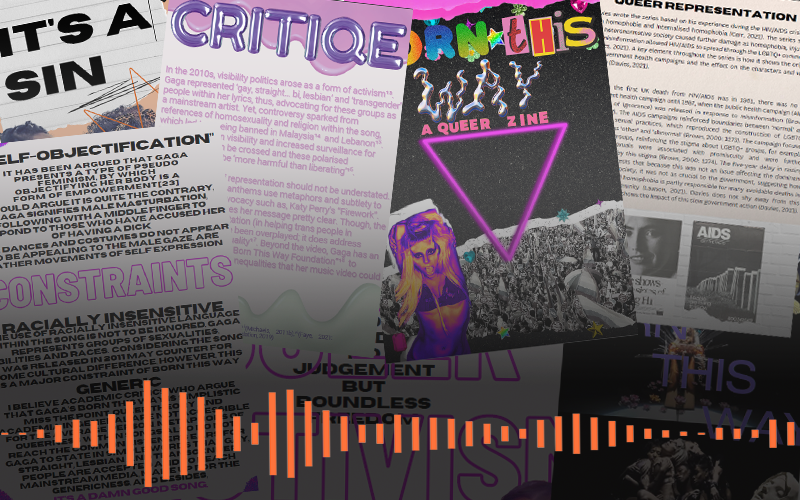School of Sociology, Politics and International Studies
Written by Dr Rosie Nelson

In the last several years, I have been listening to the variety of conversations about decolonising the curriculum and engaging with student knowledge in different forms and guises. In listening to these pedagogical conversations, I have learned a lot about how essays are often testing certain classed and Eurocentric ways of knowing and ways of writing. I have learned that decolonising the curriculum did not just come down to wider representation within the reading list, but that a truly decolonised curriculum would entail different teaching methods and assessment types.
As a result of learning these ideas, I decided to adopt a creative assessment method for my new module Queering Sexuality and Gender, a sociology course aimed at third year students within the School of Sociology, Politics, and International Studies (SPAIS). Given that this is an explicitly queer-oriented module, the decision to move away from a more typical essay format also fitted in with the module’s overall aim of questioning the heteronormative and categorical world around us.
I set up two assessments within the modules. The first was a 30% summative creative assessment, which required students to choose between creating a zine, a podcast, or a video essay. The second end of term assessment was a return to the more traditional 70% essay.
I was fortunate to hear from a colleague that the Digital Education Office (DEO) could offer significant support in tackling the technical issues related to developing these novel assessment types. Martin Nutbeem at the DEO was enthusiastic in helping me set up a variety of different resources that were linked on the Blackboard site, as well as preparing some short lectures to discuss how to run the assessment.
The structure of the assessment involved students responding to a prompt via zine, podcast, or video essay. The prompt in this iteration of the assessment asked students to apply queer theory and theoretical conversations we had been having in class to a cultural product of some sort. Some people chose to talk about trends, some about musical genres, others about current affairs, and lots about television shows.
From a grading and assessment perspective, I was able to be blown away by the way in which students were truly applying their theoretical knowledge in innovative and interesting ways. I felt strongly that the students were able to develop some skills that may have good transferability and application in their lives beyond university. I also felt that the students could have a lot more fun and let loose with the assignment in many ways. I was pleased that students were enthusiastic and excited about the things that they could apply queer theory towards.
The largest drawback was related to students feeling nervous about the assessment. I had considered that some students may be nervous of this new type of format, and had – as a result – developed a range of resources, including one-on-ones, time in seminars to work on their assessments, lectures, DEO resources, and lengthy instructions. However, even so the students were a little nervous about the assessment given that they were in the final semester of their third year and did not feel like they had had extensive experience of doing assessments in this style.
There was also a logistical set up cost of this assessment. This included finding a way to submit and mark work on Blackboard which did not involve using Turnitin. It also involved developing instructions for transcripts that could also be run through Turnitin to check for plagiarism. There was a need for sustained conversations between the SPAIS UG office, the DEO, and myself to make sure we were covering all bases in providing an adequate and appropriate assessment given the various policies we needed to adhere to. In many ways, the established systems of assessment are not accustomed towards things outside of the written norm. Whilst these were time intensive considerations throughout the development of the assessment, I am confident that this initial set up cost will not be an issue in future years of delivery, given that the hard work has now been completed.
In my opinion, the success of this assessment relied on students having access to a wide range of resources to help support them completing this assessment. This includes one-on-one time, dedicated seminar time, checklists, clear instructions, marking criteria, and digital resources to help them create and develop their ideas. I look forward to running this assessment again in future as I think it is a rare opportunity to enable students to do something fun, creative, and innovative with their knowledge.